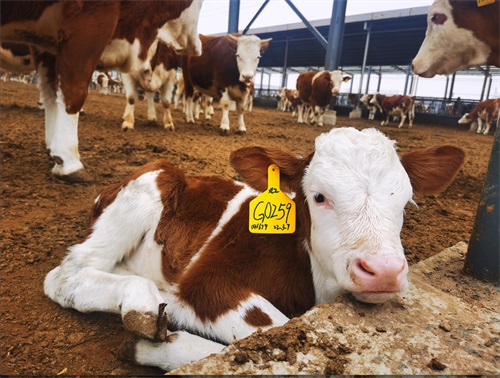Throughout the year, the cattle are kept in the herd, but when they are ready to mate, the heifers are placed in the breeding herd.
The benefits of year-round reproduction:
1. Cows produce milk throughout the year. This type of milk can be used in households.
2. Due to the bulls remaining in the herd, bull management is simpler.
3. In the case of multiple bulls, the Bulls have more competition. Because only a few cows are in heat at a time, a bull can mate with more cows within a year.
4. There are two bulls for every 100 cows. After calving, a bull will mate with a cow after producing milk.
5. Once the bull is heavy enough and heated, it will mate with the heifer.
Disadvantages of year-round reproduction:
1. Adequate food is needed throughout the year to achieve a good fertility rate.
2. Management tasks such as de waxing, vaccination, and castration must be carried out throughout the year.
3. For artificial insemination, someone must identify which cows are in high temperature throughout the year.
The breeding season is brief, and cows give birth to calves in spring or autumn.
The advantage of a short breeding season
You can match the farm production and available feed with the feed needs of the livestock herd.
Plan for easier management of herds and feed. You can label, weigh, inoculate, dehorn, and castrate all calves within one or two days. The remaining time can be used for other tasks for free.
Monitoring pregnancy rates and finding cows that are not pregnant is easier.
You can separate weaned calves of at least 10 to 15 animals of the same age group to test and compare their performance.
When beef prices are high, you can sell animals within your peer group.
For artificial insemination, hotspots are only necessary for a short period of time.
The disadvantage of a short breeding season
If a cow does not become pregnant in the herd, she must wait for the next breeding season and lose one year in her reproductive life.
Many cows get hot in the first six weeks of the breeding season, so you need more bulls to mate with them. Based on the type of farm, the size of the campsite, and the number of cows in the herd, an average of 4 to 6 bulls would be 100 cows.
You must feed and take care of the bulls between breeding seasons. Use powerful fences to separate them and prevent combat.
The heifers must be kept in a separate herd until they have enough to reproduce.
Next time, we will take a look at how to plan the breeding season.
link: https://www.bxlimage.com/nw/394.html
tags:








